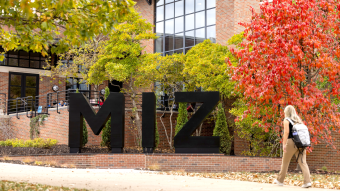Transcript
PATE MCCUIEN: After more than 70 years, the University of Missouri is replacing the 15 pin oak trees around Francis Quadrangle. The trees were widely respected by students, faculty, staff and alumni, but, they will be replaced by several younger trees that will live for more than 200 years.
After many conversations with experts in the field about the conditions of the trees, Pete Millier, the director of the University of Missouri Botanic Garden, came to the conclusion that they had to be replaced. He says the experts can see issues with the trees that the general public might struggle to see.
MILLIER: “I could look at a tree and think, ‘well it looks kind of healthy to me,’ but when they look at it, they look at it with a much more critical eye and a lot more knowledge of what’s going on with that particular tree.”
MCCUIEN: Millier says that if MU had not made this change, there was a significant risk of branches falling and potentially injuring anyone nearby, and that the new species of trees will be more compatible with their environment than the older ones, allowing them to grow healthily for a longer period of time. In the end, Millier believes it was a tough call to make, but a necessary one.
MILLIER: “These trees have needed to come down for the last probably 20 years. They have slowly been dying from disease or conditions that have fostered disease problems for them. They are on a very busy college campus, and we have thousands of people walking under them, but it’s necessary. They’re at the tipping point.”
MCCUIEN: For more on the plants on Mizzou’s campus, visit garden.missouri.edu.
I’m Pate McCuien with a Spotlight on Mizzou.



